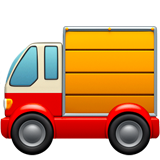Potty training is one of those parenting milestones that feels monumental. One day, you’re knee-deep in nappies, and the next, you’re navigating the sometimes tricky world of potty training.
The good news? With a little preparation, patience, and the right tools—like My Carry Potty and our Potty Training pants—you can make this transition as smooth as possible for both you and your child.
When to Start Potty Training: Is Your Child Ready?
Every child is unique, so there’s no one-size-fits-all answer to when you should start potty training. While some children may show signs of readiness as early as 18 months, others might not be prepared until closer to 3 years old. Rather than focusing solely on age, look out for these key readiness signs:
- Interest in the Bathroom: If your child is curious about what happens in the bathroom and starts mimicking your behaviours, it could be a sign they're ready.
- Dry Nappies for Longer Periods: If you notice that your child’s nappy stays dry for two hours or more, it’s a good indication that their bladder control is developing.
- Ability to Follow Simple Instructions: Can your child understand and follow basic directions? If so, they might be ready to start potty training.
We have prepared a blog with more insights into potty training readiness signs here.
How to Start Potty Training: Setting the Stage for Success
Once you’ve identified that your child is ready, it’s important to prepare both yourself and your child for this new challenge. Here are some tips to get you started:
-
Choose the Right Potty: A comfortable and appealing potty can make all the difference. My Carry Potty is lightweight, fun, and can go anywhere your child goes, making it an excellent choice for consistent potty training both at home and away. Top Tip: choose a My Carry Potty with your little one to get them excited and involved in the process!

-
Create a Routine: Start by having your child sit on the potty at regular intervals, such as after meals or before bed. This helps them get used to the idea without any pressure.
-
Dress for Success: Avoid clothes with complicated fastenings that can be tricky for little hands to manage. Easy-to-remove trousers or leggings make it simpler for your child to get to the potty in time, or for you to undress/dress them.
-
Use Positive Reinforcement: Celebrate successes with praise, stickers, or a small treat. It’s important to keep the experience positive and encouraging. A potty training progress/reward chart is always a hit.
-
Be Patient and Consistent: Potty training takes time, and there will inevitably be accidents along the way. Stay patient, consistent, and supportive to help your child build confidence.
Tips for Potty Training Boys
Potty training boys can come with its own unique set of challenges. Here’s how to make the process smoother:
- Start Sitting Down: Although many boys eventually learn to stand when they pee, it’s best to start with them sitting down. This avoids confusion and helps them focus on both peeing and pooping in the potty.
- Introduce Standing Gradually: Once your child is comfortable using the potty, you can introduce standing up to pee. A fun way to teach aim is to toss a few bits of toilet paper into the bowl and encourage them to “hit the target.”
- Model Good Behaviour: If possible, let your little one watch dad or an older brother use the toilet. Kids learn a lot by watching and imitating.
Tips for Potty Training Girls
Potty training girls also has its nuances. Here are some tips to consider:
- Teach Proper Wiping: It’s important to teach girls to wipe from front to back to avoid urinary tract infections. This might take some practice, so be patient and guide them until they get the hang of it.
- Dress for Easy Access: Avoid dresses with tights or complicated outfits. Stick to leggings or trousers that are easy to pull down quickly.
- Praise and Encouragement: Children, and especially girls, often respond well to praise and recognition. Let them know they’re doing a great job, whether they’ve made it to the potty or just tried - it's all part of the process!
Tips for Potty Training Twins
Potty training twins can be twice the challenge, but with a few strategies, you can manage it effectively:
- Consider Individual Readiness: Just because one twin is ready doesn’t mean the other will be at the same time. Assess each child individually for signs of readiness and start when both are showing interest.
- Use Separate Potties: It can be helpful to have two separate potties, especially if your twins are competitive. This way, each child has their own potty, which can reduce squabbles and encourage independence. Fortunately we have 13 designs of My Carry Potty for you to choose from!
- Staggered Training: If one twin is more ready than the other, you might choose to stagger their training. This allows you to focus on one child at a time, which can make the process less overwhelming.
- Sync Up When Possible: If both twins are ready, try to sync up their potty breaks. This helps establish a routine and can make the process more efficient.
Common Potty Training Challenges and How to Overcome Them
Even with the best preparation, potty training can come with its fair share of challenges. Here’s how to handle some of the most common issues:
- Resistance to Using the Potty: If your child is reluctant to use the potty, try not to push too hard. Take a break and revisit the idea in a few weeks. In the meantime, you can casually introduce the potty into their routine without any pressure.
- Night-time Wetting: Staying dry at night often takes longer to master. Encourage your child to use the potty before bed and reduce their fluid intake in the evening. Be patient and prepared for occasional accidents during the night.
- Public Toilet Anxiety: Some children feel anxious about using unfamiliar toilets when out and about. My Carry Potty is designed to be portable, allowing your child to use a familiar potty even when you’re away from home, which can help reduce anxiety.
Why My Carry Potty is a Must-Have for Potty Training
Designed by a mum for mums, My Carry Potty is more than just a potty; it’s a trusted companion on your potty training journey. Here’s why it’s the ultimate potty training tool:
- Portability: Whether you’re at home, visiting relatives, or on holiday, My Carry Potty goes wherever you go. Its leak-proof design means you can carry it confidently without worrying about spills or needing to dispose of it's contents immediately.
- Appealing Design: With its fun, colourful design, My Carry Potty is something your child will want to use. It turns potty training from a chore into an adventure with their potty friend. Your little one can choose from Dinosaur, Pink Dragon, Penguin and many more!
- No Need for Disposable Bags: My Carry Potty is an eco-friendly option, with no need for costly and wasteful bags. Simply clean it out after each use and you’re good to go.
Final Thoughts
Potty training is a big step for both you and your child, but with the right approach and tools, it doesn’t have to be stressful. Remember, every child is different, and it’s important to move at their pace. With My Carry Potty by your side, you’re well-equipped to support your child through this exciting milestone with confidence!





